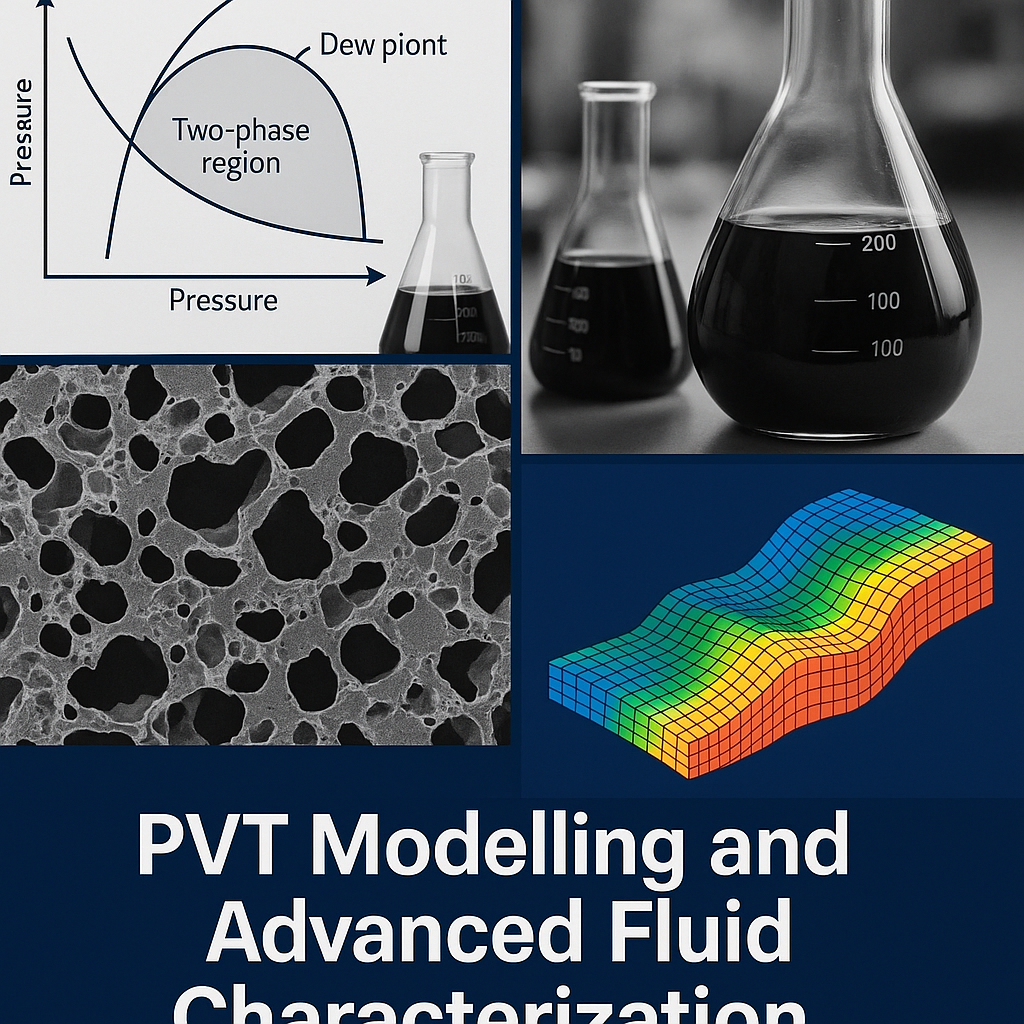PVT Modelling and Advanced Fluid Characterization
Course Objectives
The PVT Modelling and Advanced Fluid Characterization course equips students with a deep understanding of reservoir fluid behavior through PVT analysis. Students will learn fluid characterization techniques, master Equation of State (EOS) modeling, and apply these concepts to reservoir engineering, production optimization, and enhanced oil recovery (EOR). By working on hands-on case studies and industry-standard software, students will gain practical skills essential for accurate fluid modeling and optimizing hydrocarbon recovery.
Learning Objectives
- Understand the fundamentals of PVT (Pressure-Volume-Temperature) behavior and its significance in reservoir engineering.
- Learn the methods to characterize reservoir fluids and conduct various PVT experiments.
- Gain proficiency in fluid modeling techniques, including the use of Equation of State (EOS) models.
- Apply PVT analysis in reservoir engineering, production optimization, and enhanced oil recovery (EOR).
- Develop practical skills through case studies and hands-on experience with PVT modeling software.
Agendas
Module 1: Introduction to PVT and Fluid Properties
- Basics of PVT Analysis
- Definition and significance of PVT analysis.
- Role of PVT in reservoir engineering and production forecasting.
- Fluid Phase Behaviour
- Overview of reservoir fluid types.
- Phase diagrams and phase envelopes.
- PVT Experiments and Data Collection
- Overview of laboratory PVT tests (Differential Liberation, Constant Composition Expansion, Separator Tests).
- Data acquisition and quality control.
Module 2: Equation of State (EOS) Modelling
- Fundamentals of EOS Models
- Ideal gas laws vs. real fluid behaviour – Z factor characterization.
- Cubic EOS models (Peng-Robinson, Soave-Redlich-Kwong, etc).
- Fluid Characterization Techniques
- Recombination of separator data.
- Characterization of heavy ends (C6+ or C7+ fractions).
- Lumping and splitting methods for fluid components.
- EOS Tuning and Regression Techniques
- EOS tuning and validation with experimental data.
- Parameter matching using experimental data.
- Application of EOS in black oil and compositional models.
Module 3: Application of PVT Models in Reservoir Engineering
- Application of Fluid Modelling in Reservoir Simulation
- Black oil vs. compositional simulation models.
- Selection of PVT models for different reservoir types.
- PVT Application in Material Balance and Reserves Estimation
- Material balance equation (MBE) with PVT properties.
- Estimating initial oil and gas in place.
- Recovery factor estimation using PVT data.
- EOR and Gas Injection Processes
- PVT modelling for miscible/immiscible gas injection.
- Swelling tests and multiple contact miscibility.
- CO2 injection and phase behaviour analysis.
Module 4: PVT Modelling Applications in Production Practices
- PVT Models for Production Engineering
- Role of PVT in well performance modelling (IPR, VLP).
- Fluid behaviour under changing pressure and temperature.
- Surface process modelling and separator optimization.
- PVT in Multiphase Flow Modelling
- Impact of PVT on multiphase flow in pipelines.
- Role in flow assurance issues.
Module 5: Practical Fluid Modelling and Case Studies
- Hands-On PVT Case Studies
- Introduction to PVT modelling software’s.
- Workflow of fluid modelling.
- Real-World Case Studies
- Case study on volatile oil reservoir PVT modelling.
- Gas condensate PVT modelling for field development.
- Fluid model for CO2 with reference to CO2 Sequestration.
- Q&A and Course Wrap-Up
- Common challenges in PVT modelling and industry best practices.
- Open discussion on advanced topics.


